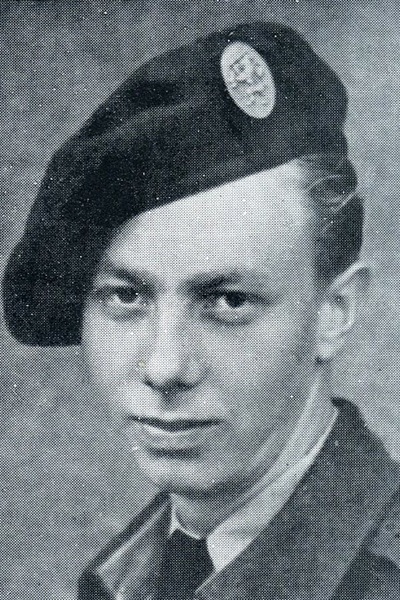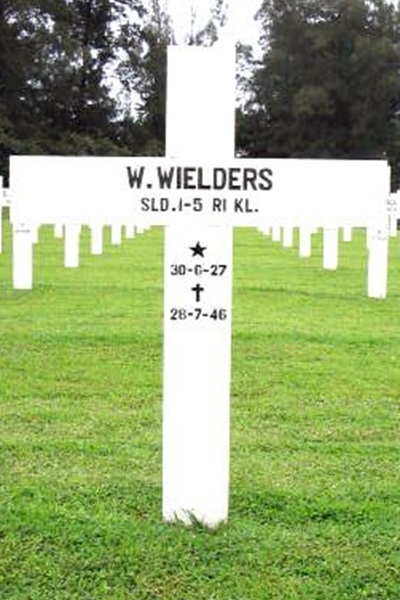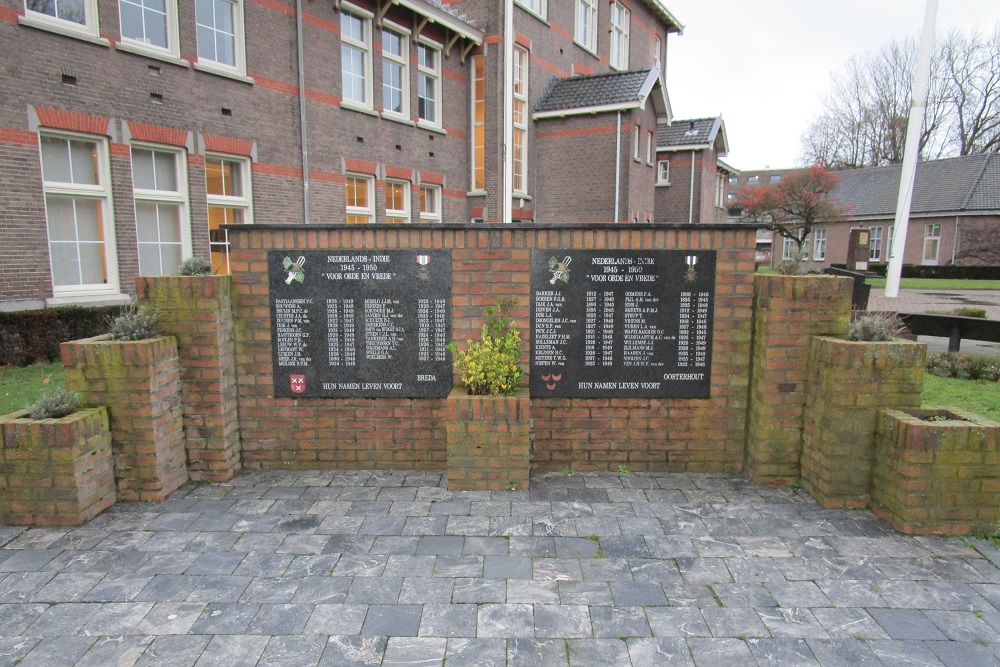Wielders, Willem
- Date of birth:
- June 30th, 1927 (Breda/North Brabant, Netherlands)
- Date of death:
- July 28th, 1946 (Padalarang/Java, Dutch Indies)
- Buried on:
- Dutch War Cemetery Pandu
Plot: II. Grave: 195. - Nationality:
- Dutch
Biography
Sld.1-5 RI
Willem was born on 30 June 1927 in Breda, the son of Wouter Wielders and Catharina Boots. His family came from Wadenoijen near Tiel, but during the war years he lived in Woudenberg, Utrecht. Shortly after the end of the war in the Netherlands, he volunteered for military service in the Dutch army, which was being rebuilt.
He was assigned to the 1-5 Infantry Regiment, which was formed in September 1945 in Wezep from the Utrecht Internal Armed Forces and volunteers from the Betuwe region. Two days after the Japanese surrender on 15 August 1945, Soekarno and Mohammed Hatta proclaimed the independence of Indonesia.
When, not long after, the British and Dutch appear to be preparing to restore the old colonial authority, the period of the Bersiap (“be prepared”) begins, during which foreigners and European and Indonesian Dutch people declared enemies become victims of violence and persecution. To fulfil his military service, Willem was prepared for deployment to the Dutch East Indies to restore peace and Dutch authority there.
In November, he travelled to Aldershot in England, where Dutch soldiers received British ammunition and army equipment (the Dutch army was still heavily dependent on British army supplies so soon after the war). At the end of that month, he travelled to the East on the Johan van Oldenbarnevelt.
However, Admiral Lord Mountbatten, commander-in-chief of the Allied South East Asia Command (SEAC), had imposed a landing ban on Dutch troops in Java and Sumatra with effect from 2 November. Mountbatten wanted to prevent the situation from escalating into a large-scale war in which the British troops still present in the Dutch East Indies would become embroiled.
The Johan van Oldenbarnevelt therefore diverted to British Malacca, where Willem was stationed in Ipoh. There, the end of the landing ban was awaited with additional training. Willem was finally able to disembark at Batavia in early April 1946. After his arrival, Willem was sent to Tjimahi, the old garrison town of the KNIL.
Shortly afterwards, Willem was deployed to the south-eastern sector of Bandung, which was secured after intensive patrols and operations. On 24 July, he was transferred to Padalarang to secure the Bandung-Buitenzorg convoy route, a crucial link where Dutch troops were frequently attacked and ambushed.
Four days after arriving in the new sector, on 28 July 1946, Willem was killed in Padalarang during enemy action. He was 19 years old and found his final resting place in Bandung at the Dutch military cemetery Pandu. In his hometown of Woudenberg, he is commemorated along with other resistance fighters and soldiers who died in the Dutch East Indies.
Do you have more information about this person? Inform us!




